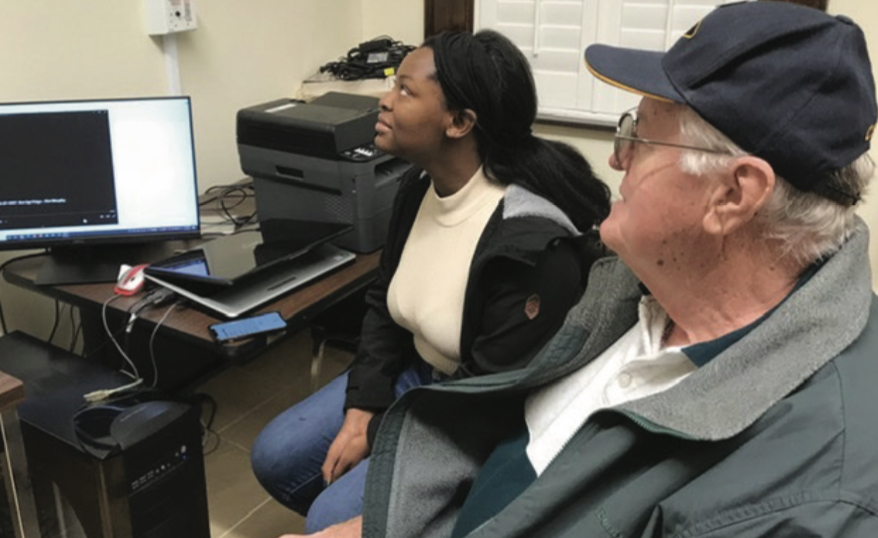Newly-surfaced confession tapes from 1950s offers information on cold case
Editor’s Note: This story was reported by Mariah Towles, Sarah Carman, Teresa Zangari, Stephen Gangi and Valentina Ortiz Elian in cooperation with The University of New Haven’s Charger Bulletin and The Connecticut Law Tribune. The reporters are students in a news reporting and writing class at the University of New Haven.
MERIDEN – Confession tapes of serial killers have surfaced in a case that changed liquor laws in Connecticut from more than 60 years ago. The tapes include interrogations of suspects in unrelated cases that remain unsolved and may contain new leads.
The tapes feature Joseph “Mad Dog” Taborsky and Arthur “Meatball” Culombe, who killed six people during robberies in the late 1950s and left 10 individuals critically injured. Connecticut State Police Detective Sam Rome interrogated the suspects, who elicited the confessions using a variety of techniques the U.S. Supreme Court later determined violated the Constitutional rights of suspects. Taborsky was executed in 1960; Culombe died serving a life sentence.
Six additional hours of tapes, delivered during the summer to the museum by a nephew of Rome, also are being reviewed by retired cold case detectives to determine whether they contain information to help solve other cases. The tapes were digitized from old reel-to-reel tapes by volunteers at the museum. Volunteers said state police detectives have begun reviewing enhanced versions of the recordings with headphones.
“There’s a couple of other killers’ tapes in there, one of which we believe may be involved in the disappearance of some people who haven’t been recovered yet,” State Police Museum Chairman Jerry Longo said during a Zoom interview with University of New Haven journalism students in October.
Longo did not identify the other cases. Nor did state police.
Should the tapes contain viable leads, they would be offered to the State Police Major Crime Squad, Longo said.
“Those historical cases are both interesting and challenging,” said Dr. Henry C. Lee, founder of the Henry C. Lee Institute of Forensic Science at the University of New Haven and a former state police commissioner.
Sgt. Dawn Pagan, a state police spokeswoman, did not offer information on the other case and cases undergoing review by the retired cold case detectives. She said, “Any cases being actively reviewed as a result of the confession tapes would be considered active and ongoing and would not be available for public release.”
Pagan declined to say what might be learned from the other tapes. However, she said, “Any leads developed from the confession tapes… would be incredibly valuable to police.”
Brian Foley, assistant to the state police commissioner, weighed in on the potential value of the tapes in efforts to solve other missing persons cases.
“For a detective, a cold case never really goes cold,” Foley said. “The department is always looking for ways to reinvigorate or bring attention to help solve a crime that would be helpful for the victims’ families.”
The notorious signatures of the Mad Dog killers were gunshots to the head and chest and pistol whippings to the head.
Following is a list of murder victims with some details about each case. The Mad Dog killings by Taborsky and Culombe followed Taborsky’s first murder six years earlier. A bizarre series of events leading to freedom for Taborsky marked the interlude.
March 23, 1950 – Joseph Taborsky, on his 25th birthday, fatally shot West Hartford liquor store owner Louis Wolfson under the right eye. Taborsky’s brother Albert Taborsky drove the getaway car and testified against his older brother Joseph. However, Albert Taborsky was declared legally insane after trial and sentencing and was institutionalized. The declaration ultimately freed Joseph Taborsky from death row because his brother was the only witness against him. He would become the only person in Connecticut to twice reside on death row.
Dec. 15, 1956 – New Britain gas station owner Edward Kurpewski and Daniel Janowsky were shot execution-style in the back of the head while kneeling, by Arthur Culombe and Joseph Taborsky. Janowsky’s toddler daughter was found alive in the back seat of her father’s car.
Dec. 26, 1956 – East Hartford liquor store owner Samuel Cohn was killed by a gunshot to the chest.
Jan. 5, 1957 – Shoe store customers Bernard and Ruth Speyer of Meriden were pistol-whipped and shot fatally in the head in North Haven. Store owner Frank Adinolfi, pistol-whipped and left for dead, told police one of the killers asked for a size 12 shoe.
Jan. 26, 1957 – The final murder victim, Hartford pharmacist John Rosenthal, was shot twice in the chest.
Rome, the detective who solved the Mad Dog case, was one of 12 children of immigrant parents. He grew up on Bellevue Street in the North end of Hartford. He applied to be a state trooper in 1937 and rapidly worked his way up to detective level. According to the late Hartford Courant reporter Gerald Demeusy in his book, “Ten Weeks of Terror,” Rome gained renown in the department and with the public for tricking rapists and robbers into confessing by engaging them in conversation, sometimes appearing to empathize with them and their plights.
“If ever there was a time we needed a Sam Rome, it’s now,” then Gov. Abraham Ribicoff said when the state police took over the case in the late 1950s. Ribicoff’s comments are reported in Demeusy’s book, which is an exhaustive and detailed account of the Mad Dog case.
Ribicoff changed his stance opposing the death penalty following the killing spree which primarily targeted liquor store owners. The legislature changed the closing times for liquor stores from 11 p.m. to 9 p.m. as a result of the murders, then to 8 p.m. in 1967. In recent years liquor stores have been allowed to stay open later, but many still opt to close by 8 p.m.
Rome pieced together finer details of the murders. His recollection that Taborsky wore size 12 shoes linked the killers to the beatings and murders at the North Haven shoe store. Rome also brought in Taborsky’s mother to persuade him to confess. Police also bugged the room where they met.
“When you hear the voices of the people from 1957… it’s stunning,” said Longo, also a retired state police detective sergeant.
Longo recalled Taborsky saying on the tapes, “Eh, I shot the guy in the chest,” then admitting he followed up with a shot to the head as the victim whined and cried.
“Just like that – nothing,” Longo said on Taborsky’s lack of emotion or feeling.
Longo said requests to hear the tapes will be reviewed on a case-by-case basis. The public can arrange to visit the museum at 294 Colony St., Meriden, by calling 203-440-3858 for appointments and tour information.
“The Connecticut State Police encourages those interested in the history of the department and its accomplishments on such high profile cases as the ‘Mad Dog Taborsky’ case,” Pagan said.
“The ongoing review by students of the confession tapes reflects this interest.”








